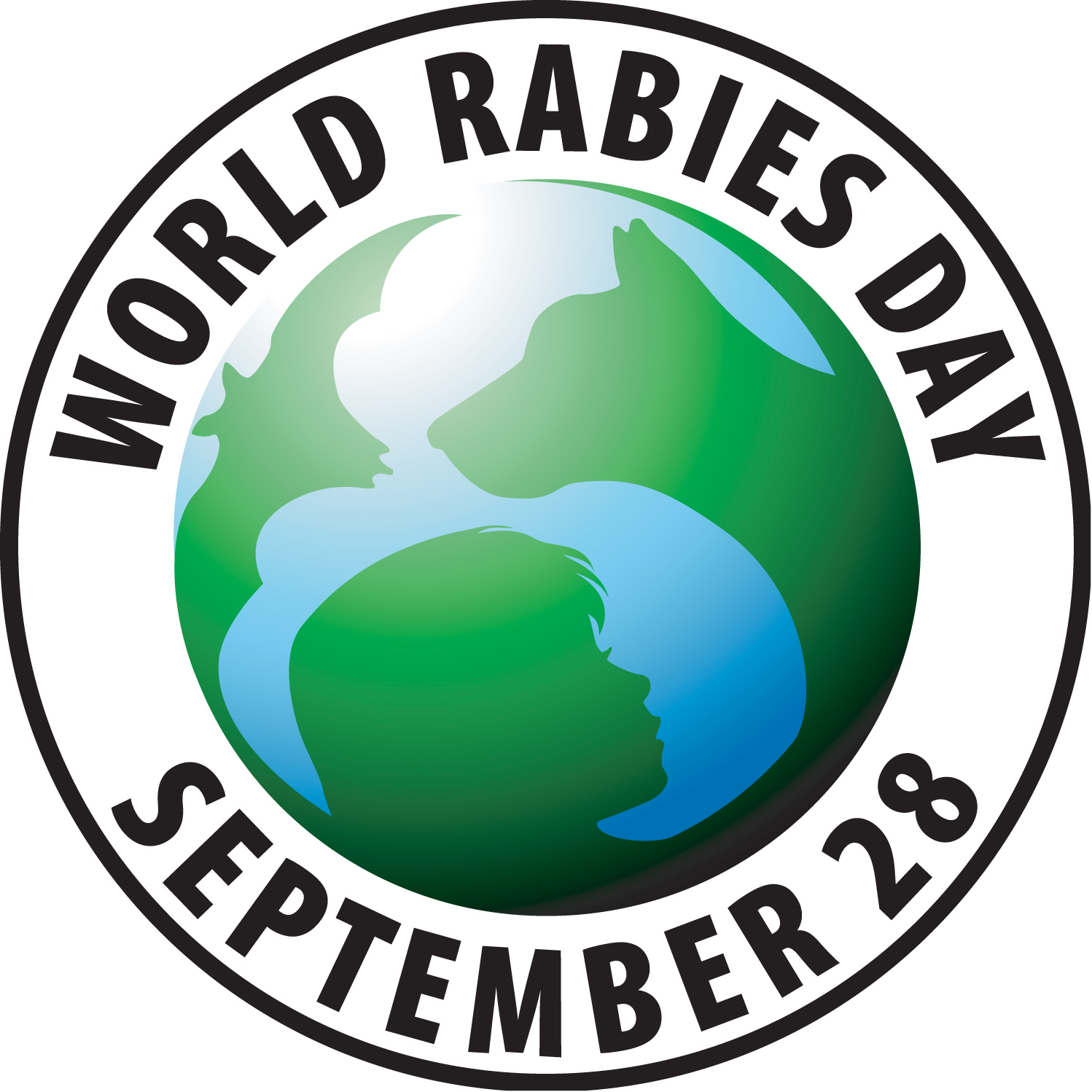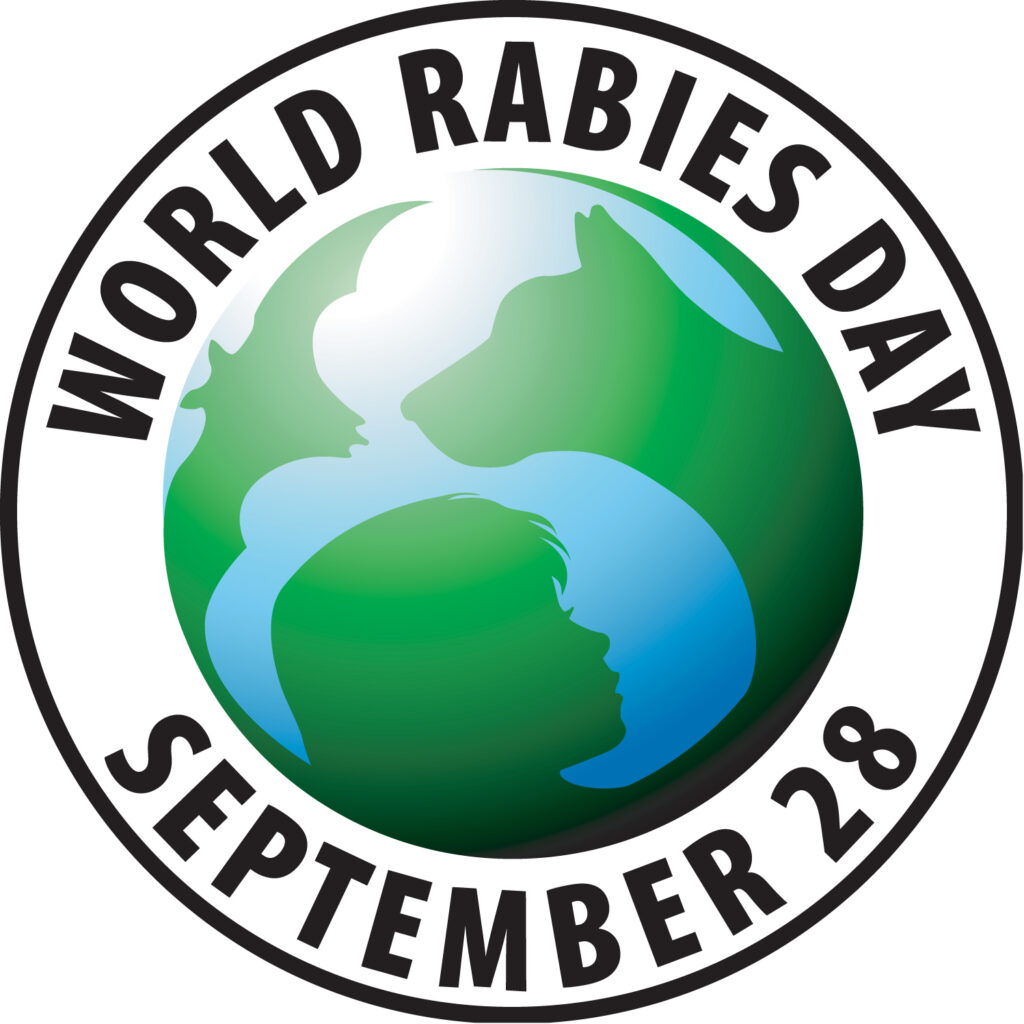 September 28th is World Rabies Day. Protecting your pets is an important part in the prevention of this disease.
Can your pet get rabies? Yes, your beloved fur baby can contract rabies and so can you. Did you know rabies is the most feared disease owners have for their pets? Rabies can be prevented in pets by annual to every three years administered for pets. Rabies is transmitted by many furry creatures roaming our backyards. Do you know how close rabies is to your home?
Do you have wildlife scurrying or flying through your neighborhood? Skunks, raccoons, bats and foxes are the number one contributors to the transmission of rabies. Rabies is transmitted chiefly through the bite if an infected animal. It can also be transmitted through other mucous membranes, but is most commonly transmitted through a bite specifically dealing with the passing of saliva into the body. According to a study done by the Center for Disease Control (CDC) in 2014 there were three positive rabid bats in the metro area and a few slightly outside. Visit cdc.gov to view the testing’s done by species on our area.
The disease itself infects the central nervous system, primarily residing in the brain and causing a multitude of symptoms. First, the symptoms mimic those of the flu. Fever, headache, dizziness or discomfort might start to appear a couple days after a bite. Going closer to 10days after an infected bite an animal or human may exhibit confusion, excessive salivation, trouble sleeping, hallucinations, irritability, difficulty swallowing may occur and possible partial paralysis.
September 28th is World Rabies Day. Protecting your pets is an important part in the prevention of this disease.
Can your pet get rabies? Yes, your beloved fur baby can contract rabies and so can you. Did you know rabies is the most feared disease owners have for their pets? Rabies can be prevented in pets by annual to every three years administered for pets. Rabies is transmitted by many furry creatures roaming our backyards. Do you know how close rabies is to your home?
Do you have wildlife scurrying or flying through your neighborhood? Skunks, raccoons, bats and foxes are the number one contributors to the transmission of rabies. Rabies is transmitted chiefly through the bite if an infected animal. It can also be transmitted through other mucous membranes, but is most commonly transmitted through a bite specifically dealing with the passing of saliva into the body. According to a study done by the Center for Disease Control (CDC) in 2014 there were three positive rabid bats in the metro area and a few slightly outside. Visit cdc.gov to view the testing’s done by species on our area.
The disease itself infects the central nervous system, primarily residing in the brain and causing a multitude of symptoms. First, the symptoms mimic those of the flu. Fever, headache, dizziness or discomfort might start to appear a couple days after a bite. Going closer to 10days after an infected bite an animal or human may exhibit confusion, excessive salivation, trouble sleeping, hallucinations, irritability, difficulty swallowing may occur and possible partial paralysis.
Dr. Kahn describes the Phases and/or signs of rabies in infected animals in the 2005 Merck Veterinary Manual:
Phase 1 – brief early phase during which subtle changes occur after infection but before signs of disease become apparent. Reversal in disposition: from aggressive to friendly; friendly to withdrawn; nocturnal to day. Chewing or licking the virus’s point of entry, resulting in ulcerated lesion.
Phase 2 – “Furious” Phase – Mad dog stage, during which the affected animal is extremely infectious and highly dangerous, showing:
Highly aggressive, severely agitated, disordered behavior
Inclination to bite people, animals, inanimate objects
Tendency towards self-inflicted injuries, resulting in broken teeth
Avoidance of people and preference for dark, quiet places
Ingestion of soil
Phase 3 – Paralytic Phase – Late stage during which the rabid animal experiences some degree of paralysis, especially in the jaw, resulting in:
Excessive drooling, sometimes perceived as “foaming at the mouth”
Appearance of choking
High-pitched vocalization
Coma & death
If any of “phases” are exhibited, death is nearly always the result.
According to the Department of Health and Human Services of Nebraska
During 2014:- 21 cases of rabid animals were reported in Nebraska.
- Eighty-one percent of cases were in wildlife and 19% were in domestic animals.
- The only cases reported in wildlife were in Big Brown bats (10) and skunks (7).
- No rabid raccoons were reported.
- Cases in cattle (4) represented all cases in domestic animals.
- 28 cases of rabid animals were reported in Nebraska.
- Eighty-six percent of cases were in wildlife and 14% were in domestic animals.
- The only cases reported in wildlife were in Big Brown bats (16) and skunks (8). No rabid raccoons were reported.
- Cases in a dog (1), a cat (1) and cattle (2) represented the cases in domestic animals.
 A report listing the current year-to-date positive cases and a menu of links to data from previous years is available on the NDHHS website.
For guidelines on what age pets should and how often receive their Rabies vaccine click here for dogs and click here for cats.
Here is how else you can help protect your pet from Rabies:
A report listing the current year-to-date positive cases and a menu of links to data from previous years is available on the NDHHS website.
For guidelines on what age pets should and how often receive their Rabies vaccine click here for dogs and click here for cats.
Here is how else you can help protect your pet from Rabies:
- Keep your pet’s rabies vaccinations up to date
- Wildlife-proof your environment
- Use caution by avoiding contact with wildlife and other unfamiliar animals.
- be vigilant by identifying unusual animal behavior: wild animals appearing friendly, nocturnal animals appearing in broad daylight, extreme aggression, violence or anxiety
- Take immediate action – If you or someone you know is bitten or scratched by a wild animal or an unknown pet, contact your physician or go to an ER immediately.
- Cats need protection too! Cats, not dogs, are most likely to be infected with rabies. According to Dr. Kahn, Merck Veterinary Manual in 2005, more cases of rabies have been reported in cats than in dogs for almost 25 years. If you have a cat, be sure its rabies vaccinations are up to date!


